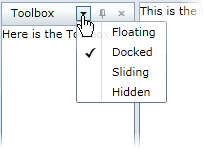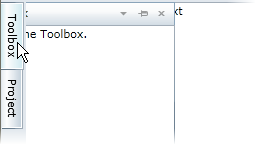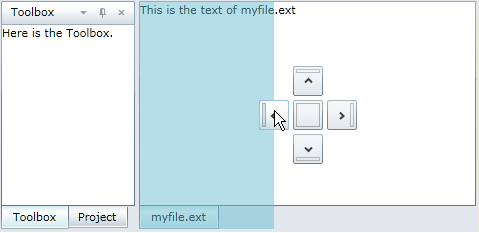Step 3 of 3: Running the Application
Now that you've created a WPF application with a C1DockControl and tab items, you're ready to run the application. Complete the following steps:
From the Debug menu, select Start Debugging to view how your application will appear at run time. Your application will look similar to the following:

The Toolbox is docked on the left as we specified in the XAML.
Click the drop-down arrow in the Toolbox header and select an option to float, slide, or hide the C1DockControl.

Note that you can also click the Project tab and select any of these options for the C1DockControl.
If you click the pushpin
 , the C1DockTabItems will appear on the left and slide open when clicked.
, the C1DockTabItems will appear on the left and slide open when clicked.
If you click the Hide button
 , the C1DockControl will be hidden.
, the C1DockControl will be hidden.Select the Toolbox header and drag it over the C1DockControl with the myfile.ext tab. Notice the dock indicators that appear over the dock zones. The dock zones are shaded in blue when you hover over an indicator.

The second C1DockControl with the myfile.ext C1DockTabItem does not have a header since we set ShowHeader to False.
Congratulations! You have successfully completed the DockControl for WPF quick start. In this quick start, you've used the C1DockControl to create several windows that can float or be docked.


